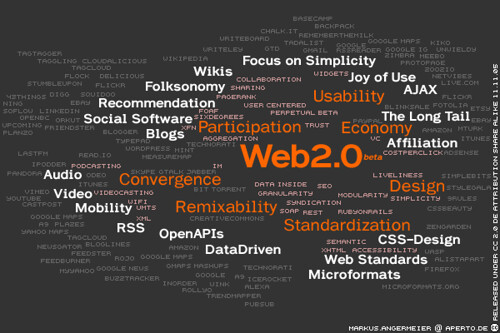Let’s get this part out of the way first, and then you may crucify me in the comments all you want: Less is not more.
If you’re writing a display ad for print, especially a classified ad, then perhaps “less is more” would hold true. But we’re talking about web copy, and I’m here to clear up this massive misconception once and for all. More is indeed more, as long as you follow the guidelines I’ve already laid out for you in previous parts of this series.
Give Your Readers What They Want
This is where I veer off on a tangent about personality types, and how all internet users are different and have different needs. Without delving too deep into the science of it all, there are several different personality types, and each one of us is composed of parts of each. Read the Wikipedia entry on the Myers-Briggs indicator for more detailed info on what I mean by all of this, but for the purpose of this series, I’ll keep this concept incredibly simple.
Some people are more expressive, and want to see fanciful imagery, and just the “broad strokes” or “big picture” of your message. Some are more dominant, and want things boiled down to the hard facts; “What can you do for them?” Others still will prefer to know every last detail about your product or service, and are more than willing to invest the time to learn it all before they’ll make a buying decision. Another cross-section of your visitors will be just as concerned with who else you have worked with, and what kind of credibility you have (in their eyes, of course).
Hopefully that wasn’t too confusing. To break it down even simpler, here’s a list of what your web copy needs:
- images and summaries, and clean design
- detailed information, including statistics and hard facts combined with the benefits of what you do
- Testimonials from past clients and customers
- Tons and tons of benefit statements- “What’s in it for me?”
It goes without saying, a few paragraphs of copy spread throughout your site won’t get the job done. So more is indeed more. When you start to try to map out how to appease your various different types of visitors, you’ll realize that writing the copy for your website is a bigger job than you thought.
A while back I mentioned that I had purchased Waiting for Your Cat to Bark, and here at last is my quick-and-dirty review: It’s an incredibly comprehensive book, that focuses on building your marketing around ‘personas’ that are representative of your target market. For e.g.: ‘Shelley is a single mom who watches morning television and shouts at the tv, and listens to rap music. She’s looking for a software program that will help her tutor her daughter in math, and she wants to make sure that she chooses one that will get just the right results, as math was never her strongest subject.’ Perhaps that’s not exactly how the Eisenbergs would lay out a persona, but you get the picture. Once you can see your potential customers in your mind’s eye, you’re better prepared to speak to their needs, with the language and hot-buttons that will get the best results.
Some Shortcuts for Beginners
you’re managing a multi-million dollar e-commerce site with several consecutive campaigns and hordes of landing pages, you probably want to purchase the aforementioned text and really focus on these concepts in great detail, or even better, hire someone who understands it better than you. If you’re just trying to get the most out of your few pages of copy on your site, especially for a service company, here’s a few tricks to get more out of what you have.
For starters, remember the guidelines that I laid out in the rest of this series: Speak to your visitors directly, using “you” and “your” often, to engage them, and avoid words that mean something to you and nothing to them. And don’t forget to ask them to take the next step; when they’ve reached the bottom of a page of copy, or once you’ve laid out your offer in its entirety.
Here’s where we go one step further. Take a look at your homepage. Does it talk about your company, and what you do? Does it answer key questions about who you are? There’s no need to reveal every detail about your company on your homepage, but knowing what you know now about your different visitor’s needs, invite them in to have their questions answered.
If you or any key member of your company’s team are mentioned in the copy on your home page, highlight their name, and make it a link to their bio or “About” page. Same goes with important details like testimonials, services, history and most importantly your contact page. When a reader reads through the copy, they will instinctively know that on the other end of that link lies more information about that topic. If that topic is important to them or answers the question they are looking to have answered, you’ve brought them into your site further, and as I’ve mentioned before, you are now more likely to keep them around for a while.
Contact information should always be easily accessible, especially if you are a retail outlet. I can’t tell you how often I do a quick Google search for something, only to find that it takes another few minutes to locate the address or phone number of the company I’m searching for. Remember those folks that want the instant gratification? Give it to them.
Another way to expedite the process of absorbing your site’s information for the time-pressed or hurried type that wants results NOW, is to use bold letters in your copy, for the key points. If you choose the right phrases and benefit statements to make bold, a reader should be able to scan through your page and get the gist in around six seconds, and make a judgement call as quickly as they want to.
Now read that paragraph back reading only the bold phrases, and you’ll get an idea of what I mean.
To sum up, you need lots of various different kinds of information to fully inform your visitors about your company. Think about it this way: If a member of your sales force were to try to close a deal with a new customer, what info would they have to share with that customer before the customer could make a confident buying decision? There’s nothing to stop you from publishing it all on the web, so that even if you don’t covert them into a customer online, you create a better, more qualified ‘lead’ when they contact you directly or visit your location.
Statistically (in urban centers), between 70-80% of buying decisions either start or end online. Sorry Yellow Pages, but your reign is over. On that note, have you noticed the listings books getting wise to this? In Canada, yellowpages.ca is now offering more extensive business info in their online listings, a direct result of consumer demand.
If we know that our customer’s crave more relevant info about us online, why not provide every last bit of what they’re looking for on our sites?





